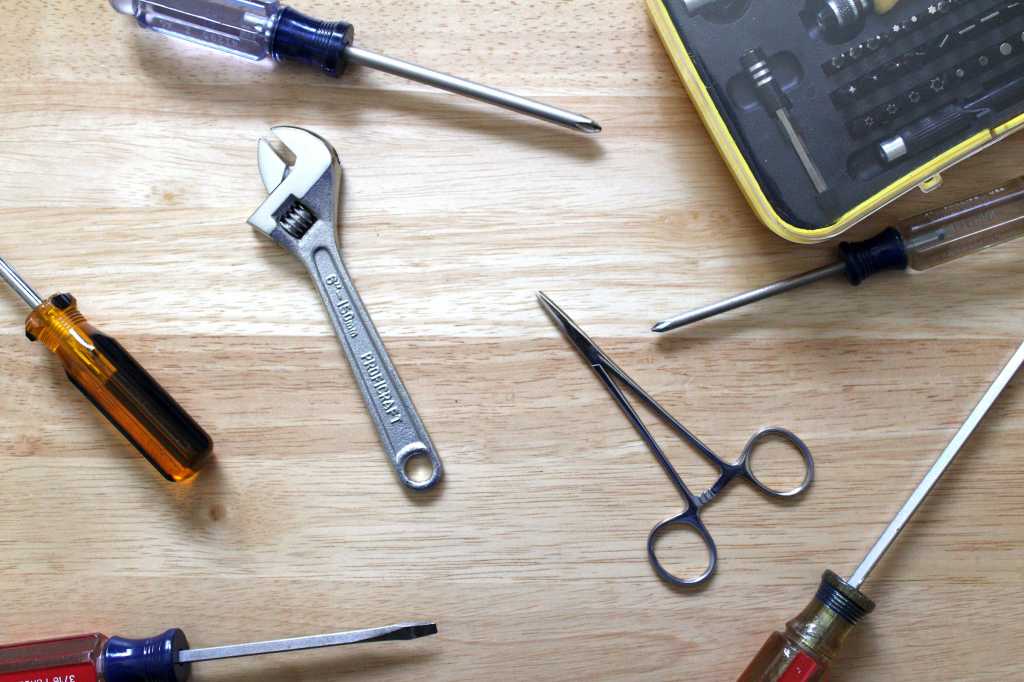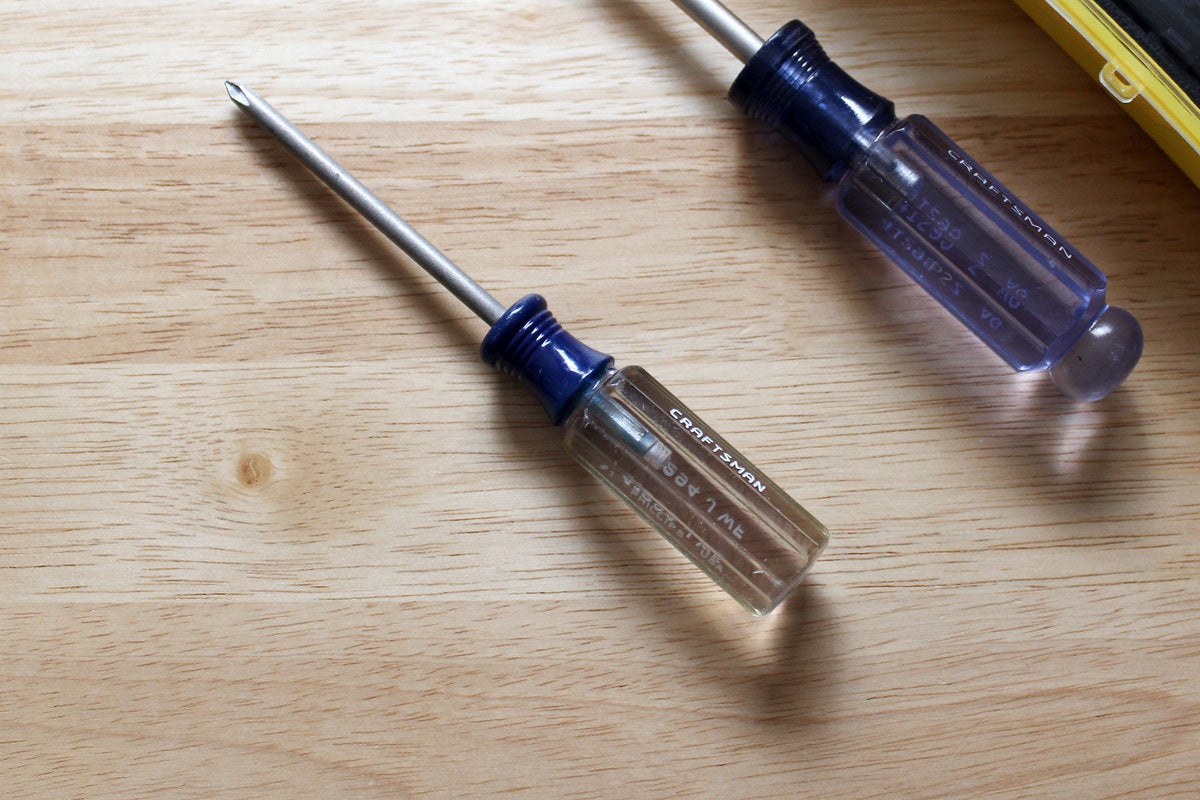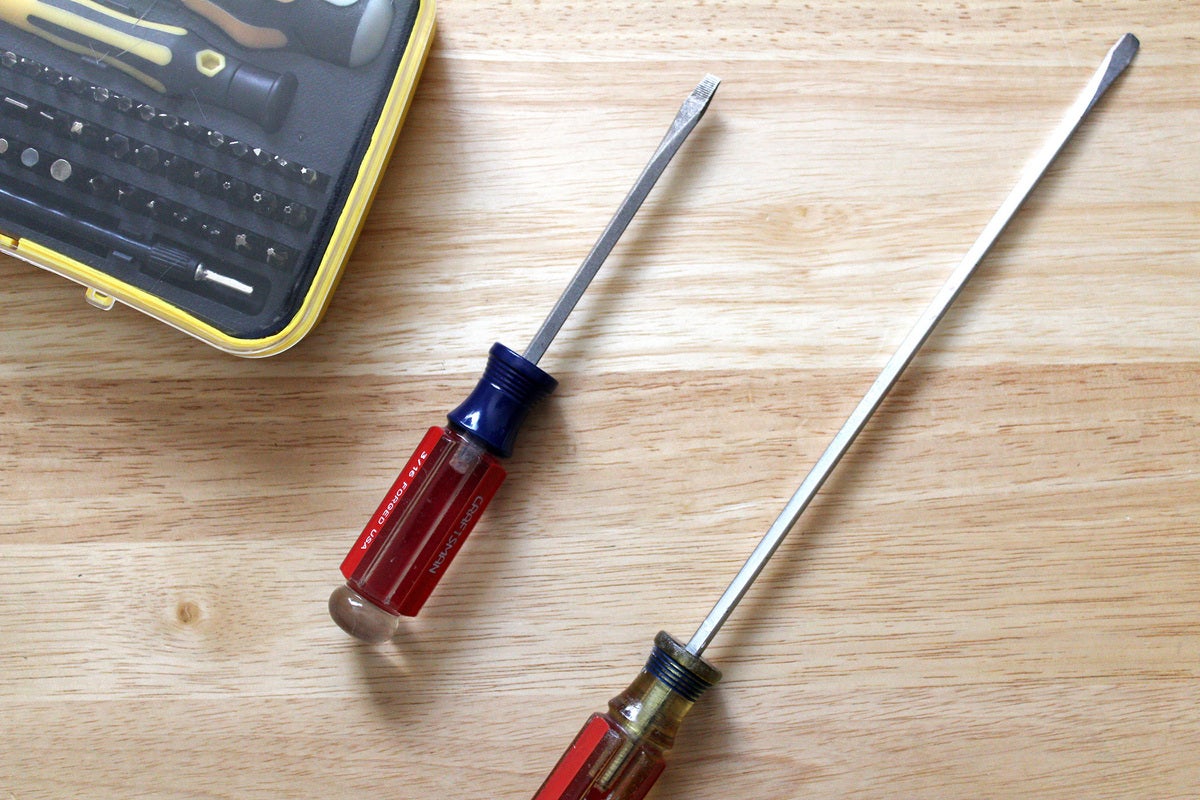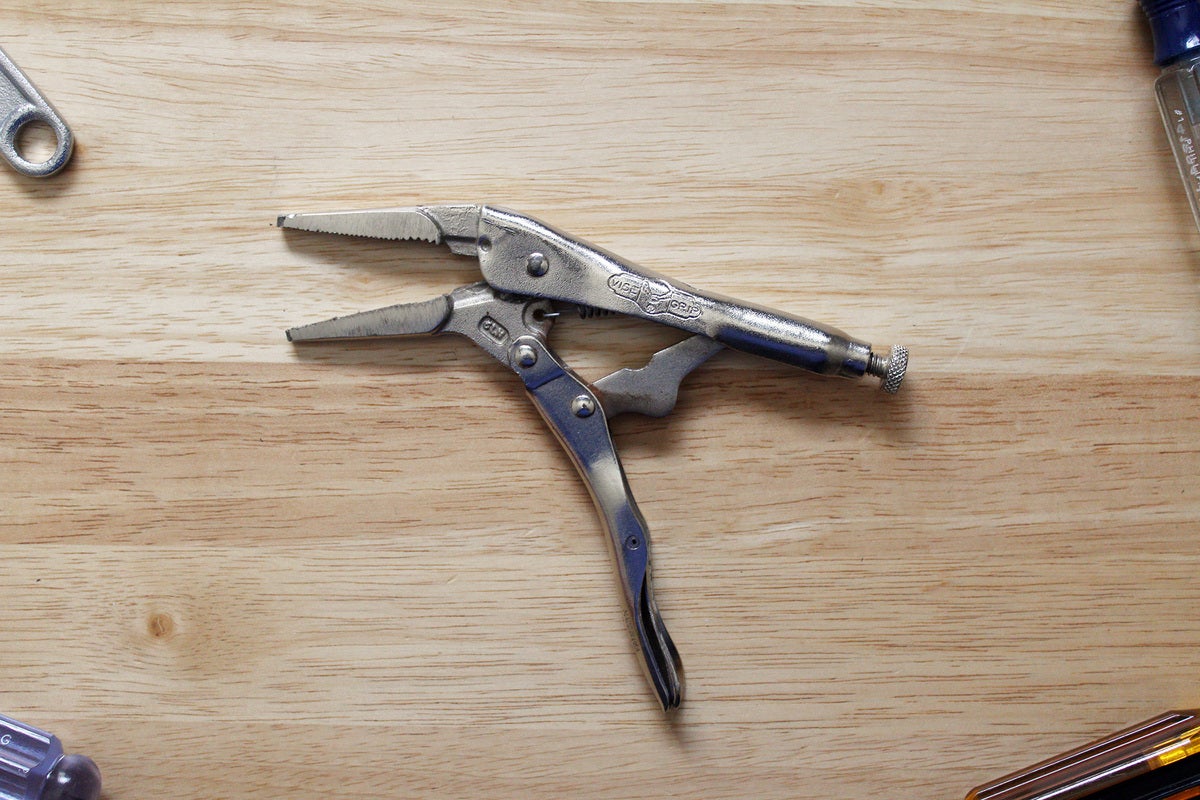You can build a PC with just a screwdriver or two on hand, but you’ll have an easier time of it if you have all the essentials on hand. That includes tools to get you out of sticky spots, which always occur when you assume they won’t. Keep these 10 items on hand for builds and they’ll keep your assembly woes to a minimum.
We’ve divided the list into the absolute essentials (for the minimalists out there) as well as our recommended additions for a well-rounded kit. But really, there’s no need to scrimp. All of these tools are very affordable. Our guide to how to build a PC can help show you how to put those tools to work, while our primer on how to set up your PC the right way explains how to get the software side of things in order after you’re done cobbling together your creation.
To see our PC building antics live as they happen, subscribe to PCWorld’s YouTube channel.
Screwdriver (Phillips #2)
Phillips #2 screwdrivers in various forms. We recommended getting a magnetized version (or magnetizing a standard one).
Nearly all screws in a computer case require this cross-head screwdriver. Any Phillips #2 screwdriver will do—be it the plain, trusty CraftsmanRemove non-product link in your toolbox, the fancier ratcheting typeRemove non-product link with swappable bits, or kits with a full array of bits that include a PH2 head.
We highly recommend getting a magnetic screwdriver, or buying a magnetizerRemove non-product link to convert your existing tools. You can get a magnetic screwdriver kit with interchangeable bitsRemove non-product link for quite cheap, usually around $15. Regardless of what you choose, this purchase will save you the time and hassle of fussing with screws that refuse to stay put as you attach them and / or that fall into hard-to-reach places.
Should you have hand injuries or tendonitis, look into ratcheting screwdrivers, which help reduce fatigue. For more torque, get a screwdriver with a fatter handle.
Screwdriver (Phillips #1)
Adding an M.2 SSD to your build or laptop? You’ll need a Phillips #1 screwdriverRemove non-product link, as a Phillips #2 will be too large for the screw drive (the indentations on the screw head used to turn the screw).
Since M.2 SSD mounting screws are delicate, you won’t need much torque to get them in or out and thus a slender or small screwdriver works fine. You should get a magnetized one though, as screws that take a Phillips #1 tend to be small and easy to lose track of.
Builds that don’t use any M.2 SSDs can get away with just a Phillips #2, but we’ve found that it never hurts to have a Phillips #1 on hand.
Screw tray
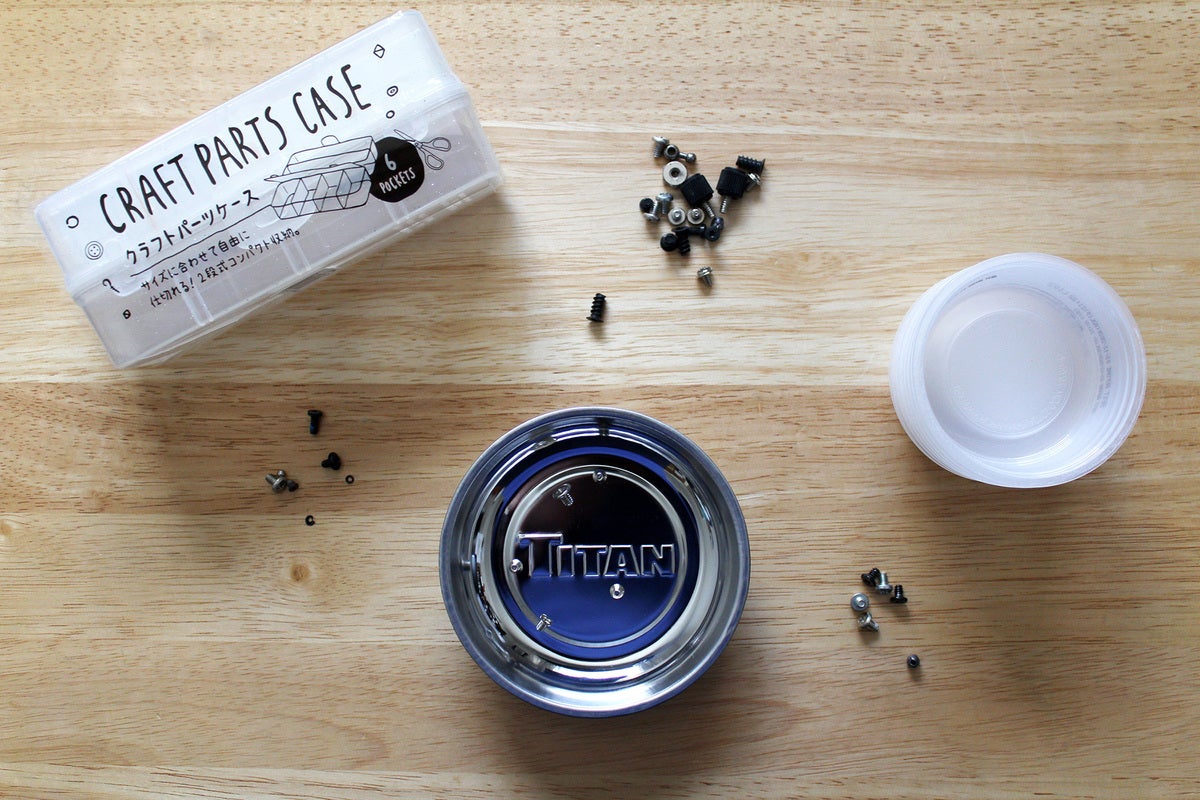
You can use whatever you have as a screw tray, or upgrade by purchasing a magnetized tray. (The latter provides some protection against cats and their mischievous tendencies.)
You should put screws in some kind of container as you work—a shallow dish or bowl, a tray, even a cup. (Using more than one is even better, as you can keep track of different screw types more easily.) Placing everything loose onto a table usually results in missing screws, while clothing pockets run the risk of screws becoming lost as you move around.
For a more tidy solution, use a clear pill caseRemove non-product link or a bead organizerRemove non-product link to hold and store screws. They range from $2 to $7 in price, take little space, and let you see everything at a glance. If you have a fixed work area, you can instead opt for a larger hardware organizerRemove non-product link, which will have multiple small drawers. Leave one or two compartments free for dumping in screws as you build.
You can also buy a magnetic trayRemove non-product link or a magnetic matRemove non-product link if you’re concerned about knocking items around on a work surface (or have a standard-issue cat that pushes items off tables). These run between $6 to $10.
Hex nut driver
If not tightened down sufficiently, motherboard standoffs can come loose as you try to loosen the screws holding the mainboard in place. The screw remains tight within the standoff, however—leaving you in purgatory until you can keep the standoff still as you remove the screw. In fact, further down this list are tools to help fix that common problem.
But if you own a hex nut driver in the right size, you can avoid that time and irritation. Before you mount the motherboard, slip it over the standoffs and ensure each one is firmly attached to the case. No need to overtighten, either; just a bit past when the standoff first hits the metal of the case. Too much and you risk stripping the screw threads on the standoffs.
Think a spinning standoff will never happen to you? Readjustments can come up during building. Also, later maintenance on your system may require it. Believe us, nothing stokes deep rage like when a standoff gets stuck as you try to remove a mobo for an RMA return.
Some cases come with an accessory—a small metal piece compatible with a Phillips #2 screwdriver—that fulfills this same role, but not all do. You may also have a bit like this in a screwdriver kit you already own or will be buying (look for the M5 size).
If neither apply to you, you can purchase a standalone 5mm hex nut driverRemove non-product link. It will work with the two most common sizes of standoffs, though the smaller size will be a tad loose. (For a perfect fit, also purchase a 3/16-inch hex nut driverRemove non-product link.) You may want to grab these regardless of what you already own, as the larger grip on a standalone hex nut driver makes tightening or loosening the standoff easier.
Already have a small adjustable wrench in your toolbox? That works too, though it’s more awkward to maneuver than a hex nut driver.
Flashlight or headlamp
Normal lighting can create shadows that reduce what you can see while working in a case, especially if it’s a dark chassis. A good flashlight makes clear where stray screws rolled, the labels on front panel pins, and where that one last screw hole on the mobo is. You can get an affordable tactical flashlightRemove non-product link starting at about $20.
For the ultimate in practicality, a headlamp makes working in dark, tight spots of your case even easier—since it’s strapped to your forehead, you can keep working without interruption. You can get a reliable one for about the same price as a nice flashlight, with this popular modelRemove non-product link coming in at $20.
Adjustable wrench
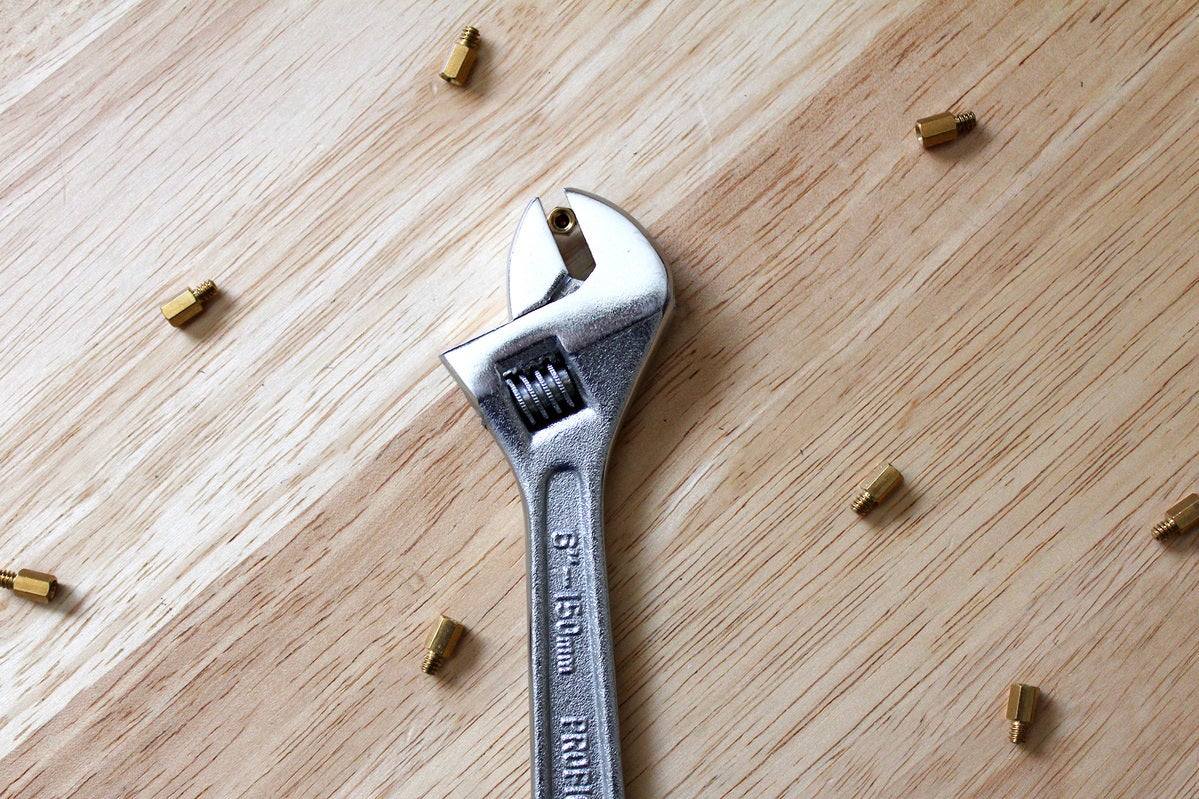
A crescent wrench can fill a dual role in your toolbox: Use it to tighten standoffs prior to motherboard installation, or to help with freeing one spinning loose under a mobo.
Every now and then, the screw holding your motherboard in place won’t come loose. Instead, the standoff underneath the mobo does, resulting in the screw and standoff spinning around as an unremovable unit. This is a more common occurance during repairs or upgrades, but it can also happen during a build when undoing a screwup.
To fix this, you need to keep the standoff from moving while you loosen the screw—a job neatly filled by a small adjustable wrenchRemove non-product link (also known colloquially as a crescent wrench), which can be bought for under $15. Slide it between the motherboard and the case, then clamp it down on the standoff. Then hold that pesky standoff in place to take out the screw.
An adjustable wrench can also be used to tighten standoffs before you install a motherboard, if you don’t have a hex nut driver on hand.
For dealing with loose standoffs, get an adjustable wrench with a slender head, like these 4-inchRemove non-product link and 6-inch Channellock modelsRemove non-product link. (Splurge version: This pocket-sized option with an ultra slim head.) Don’t want to spend that much? You can get away with this cheap 6-inch Stanley wrench as a preventative measure. Use it to ensure that the standoffs are tightened down properly before installing a motherboard.
An adjustable wrench is ideal since it leaves no marks on a standoff after extraction, but every situation with a spinning standoff leaves a different amount of room to work in. If you can’t maneuver one into position, try the next item on this list: a hemostat.
Hemostat
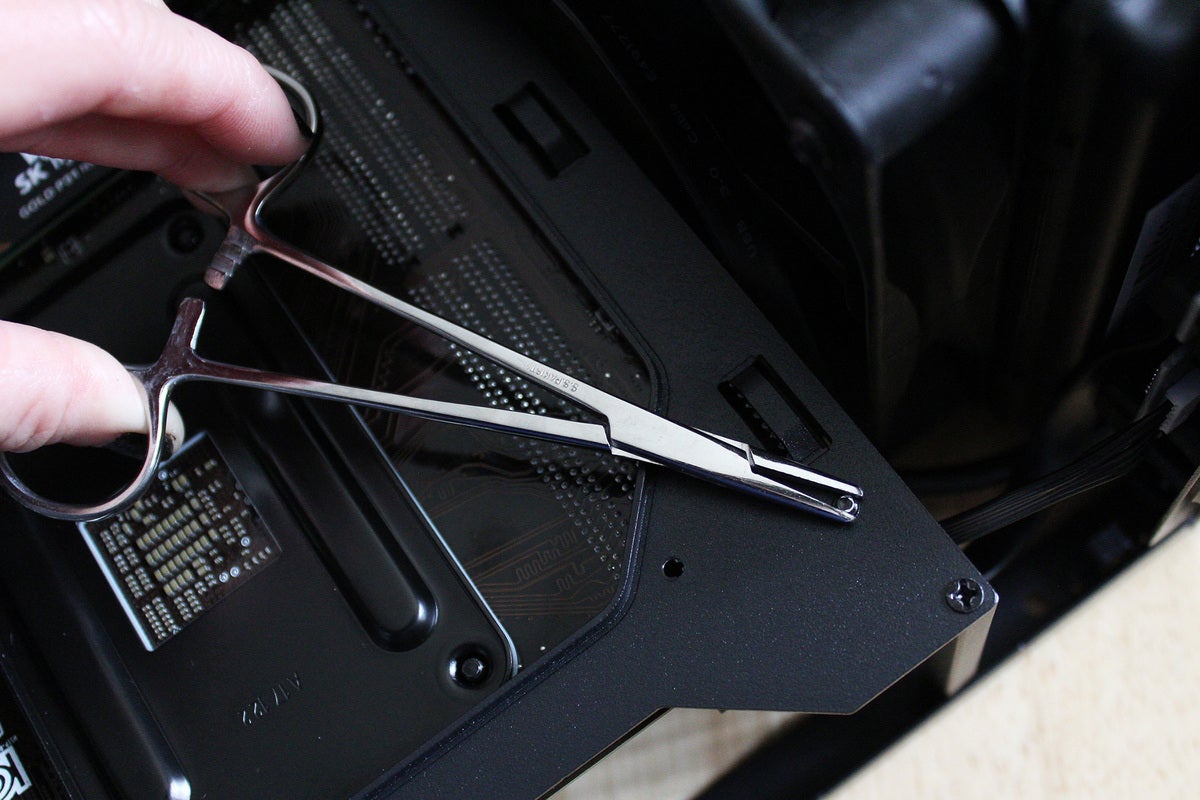
A hemostat clamped onto the back of a motherboard standoff. To replicate this, screw the loose standoff back into the case to have as many threads as possible to grip.
When you’re faced with a hard-to-reach standoff trapped under a motherboard, a hemostatRemove non-product link can help you out of that jam. These locking forceps are slender and needle-nosed—ideal for getting under the motherboard when there’s limited room. You can sometimes even clamp onto the standoff’s screw threads poking out the back of the motherboard tray. Adding one to your lineup won’t cost much, either, as it’ll run about $5.
Using a hemostat is straightforward: Get the jaws around the standoff, then squeeze the handles to lock it. (Note: Most hemostats have teeth that can scratch up your standoff’s finish. To avoid this outcome, wedge part of a rubber band between it and the standoff whenever possible.)
As a reminder, you’ll barely ever need this tool if you make sure your case’s standoff screws are firmly seated before installing a motherboard. Use a hex nut driver or an adjustable wrench to tighten them just a bit past when the standoff first bottoms out. (Don’t go too crazy—overtightening can create its own problems, i.e., stripped screw threads.)
A hemostat also comes in handy if you opt for rubber “screws” for mounting case fans. Just clamp onto one end to maintain your grip while tugging it through the fan.
Flathead screwdriver
You can’t always predict when a case sports a front panel held in place by stubborn plastic clips—much less ones located in hard-to-reach places. A flathead screwdriver can help you push them in to release. A standard driver with a longer neckRemove non-product link is ideal, since it will fit into tight spots more easily. For size, a 1/4- or 3/8-inch head and an 8-inch neck should work.
Note that these can dent and scratch the plastic if you apply them directly. You can put a bit of protective material (a bit of rubber band or a cotton ball) between the screwdriver head and the plastic before levering away.
Rubber bands

Eat out a lot? You probably already have tons of these in your kitchen’s junk drawer in various sizes.
Small rubber bandsRemove non-product link can protect paint from the rough teeth on pliers and hemostats, serve as a poor person’s substite for Velcro ties, and add extra grip in tight situations (like if you need more traction on a slightly stripped screw head). In a pinch, a couple of these can make it easier to slide side panels off of cases too, if you have slippery hands. (Upgrade version for dealing with side panels: a rubber jar openerRemove non-product link, which is easier for big hands to hold in place.)
Vise grip
Stripped a screw head? You can extract the screw from your build by using a vise grip if a hemostat doesn’t generate enough torque. Clamp the jaws of these locking pliers around the screw head, then start turning. (Be mindful of what else is in the vicinity, as these are a bit bulky.) You can usually pick up a 6-inch vise gripRemove non-product link for under $15.
Also like a hemostat, you can use a vise grip to help with the use of rubber “screws” for mounting case fans. Lock onto one end to maintain your grip while yanking it through the fan.

